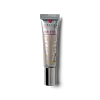What's inside
What's inside
 Key Ingredients
Key Ingredients

 Benefits
Benefits

 Concerns
Concerns

 Ingredients Side-by-side
Ingredients Side-by-side

Water
Skin ConditioningCoco-Caprylate/Caprate
EmollientJojoba Esters
EmollientCentaurea Cyanus Flower Water
Skin ConditioningTri (Polyglyceryl-3/Lauryl) Hydrogenated Trilinoleate
EmulsifyingSilica
AbrasiveCaffeine
Skin ConditioningNiacinamide
SmoothingMagnesium Sulfate
Cetyl Alcohol
EmollientSodium Benzoate
MaskingPotassium Sorbate
PreservativeCitric Acid
BufferingTocopherol
AntioxidantCI 77891
Cosmetic ColorantCI 77492
Cosmetic ColorantCI 77491
Cosmetic ColorantCI 77499
Cosmetic ColorantWater
Skin ConditioningCyclomethicone
EmollientGlycerin
HumectantPEG-10 Dimethicone
Skin ConditioningDipropylene Glycol
HumectantHexyl Laurate
EmollientTalc
AbrasiveDimethicone
EmollientIsoeicosane
EmollientBetaine
HumectantDisteardimonium Hectorite
StabilisingSaccharomyces Cerevisiae Extract
Skin ConditioningPortulaca Oleracea Extract
Skin ConditioningTocopheryl Acetate
AntioxidantEthylhexylglycerin
Skin ConditioningAluminum Hydroxide
EmollientHydrogenated Starch Hydrolysate
HumectantGlycosyl Trehalose
Emulsion StabilisingPalmitic Acid
EmollientMagnesium Sulfate
Silica
AbrasiveStearic Acid
CleansingPhenoxyethanol
PreservativeVinyl Dimethicone/Methicone Silsesquioxane Crosspolymer
Acrylates/Dimethicone Copolymer
Skin ConditioningMethicone
EmollientDimethicone/Vinyl Dimethicone Crosspolymer
Skin ConditioningCI 77492
Cosmetic ColorantCI 77499
Cosmetic ColorantCI 77491
Cosmetic ColorantWater, Cyclomethicone, Glycerin, PEG-10 Dimethicone, Dipropylene Glycol, Hexyl Laurate, Talc, Dimethicone, Isoeicosane, Betaine, Disteardimonium Hectorite, Saccharomyces Cerevisiae Extract, Portulaca Oleracea Extract, Tocopheryl Acetate, Ethylhexylglycerin, Aluminum Hydroxide, Hydrogenated Starch Hydrolysate, Glycosyl Trehalose, Palmitic Acid, Magnesium Sulfate, Silica, Stearic Acid, Phenoxyethanol, Vinyl Dimethicone/Methicone Silsesquioxane Crosspolymer, Acrylates/Dimethicone Copolymer, Methicone, Dimethicone/Vinyl Dimethicone Crosspolymer, CI 77492, CI 77499, CI 77491
Ingredients Explained
These ingredients are found in both products.
Ingredients higher up in an ingredient list are typically present in a larger amount.
Ci 77491 is also hydrated iron III oxide. It's sole purpose is to give a red/pink hue to products.
Iron III oxides are classified as inorganic chemicals for coloring.
Synthetically created Ci 77491 is considered safer than those naturally found. This is because the synthetically created version may contain less impurities. Iron oxides are generally non-toxic and non-allergenic.
Learn more about CI 77491Ci 77492 is also hydrated iron III oxide. It's sole purpose is to give a yellow hue to products.
Iron III oxides are classified as inorganic chemicals for coloring.
Synthetically created Ci 77492 is considered safer than those naturally found. This is because the synthetically created version may contain less impurities. Iron oxides are generally non-toxic and non-allergenic.
Learn more about CI 77492Ci 77499 is also hydrated iron III oxide. It is created from mixing red and black iron oxides. This helps give shades of darkness to a product.
Iron III oxides are classified as inorganic chemicals for coloring.
Magnesium Sulfate is a salt. More specifically, it is an epsom salt, or the bath salt used to help relieve muscle aches.
Despite having ‘sulfate’ in the name, it isn’t a surfactant or cleansing agent like sodium lauryl sulfate. Unlike those sulfates, magnesium sulfate doesn’t have the same cleansing or foaming properties (it's simply a type of salt).
In cosmetics, Magnesium Sulfate is used to thicken a product or help dilute other solids. It is a non-reactive and non-irritating ingredient.
One study shows magnesium deficiency may lead to inflammation of the skin. Applying magnesium topically may help reduce inflammation.
You can find this ingredient in sea water or mineral deposits.
Learn more about Magnesium SulfateSilica, also known as silicon dioxide, is a naturally occurring mineral. It is used as a fine, spherical, and porous powder in cosmetics.
Though it has exfoliant properties, the function of silica varies depending on the product.
The unique structure of silica enhances the spreadability and adds smoothness, making it a great texture enhancer.
It is also used as an active carrier, emulsifier, and mattifier due to its ability to absorb excess oil.
In some products, tiny microneedles called spicules are made from silica or hydrolyzed sponge. When you rub them in, they lightly polish away dead skin layers and enhance the penetration of active ingredients.
Learn more about SilicaWater. It's the most common cosmetic ingredient of all. You'll usually see it at the top of ingredient lists, meaning that it makes up the largest part of the product.
So why is it so popular? Water most often acts as a solvent - this means that it helps dissolve other ingredients into the formulation.
You'll also recognize water as that liquid we all need to stay alive. If you see this, drink a glass of water. Stay hydrated!
Learn more about Water